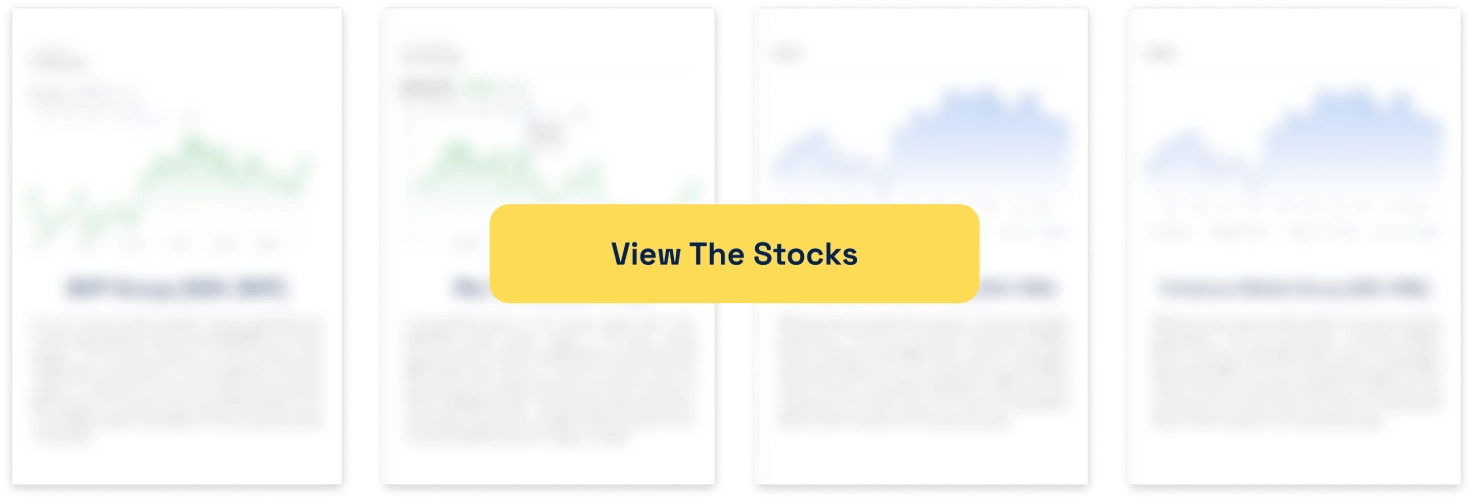Is an RBA Rate Cut in November Locked In? What It Could Mean for Housing, Banks, and the Dollar
![]() Ujjwal Maheshwari, August 26, 2025
Ujjwal Maheshwari, August 26, 2025
The RBA has again hinted more rate cuts are on the way, with markets eyeing November—potentially a game-changer for households, banks, and exporters. Is the RBA’s hand now tied?
The Reserve Bank of Australia is once again in the spotlight as speculation builds over its next policy move. With inflation moving closer to target and the labour market showing signs of weakness, markets are now strongly anticipating a rate cut in November. Economists at the major banks share that view, suggesting a 25-basis-point reduction could take the cash rate down to 3.35 per cent from its current level of 3.60 per cent (after the August cut). For investors, this decision carries far-reaching consequences: households could finally see mortgage relief, bank earnings models may need rethinking, and the Australian dollar could shift course.
What are the Best ASX stocks to invest in right now?
Check our buy/sell tips
Why November Looks Locked In
The Reserve Bank of Australia has made it clear in its recent minutes that more rate cuts are on the table. The question, however, is when. Policymakers have consistently emphasised that future moves will be data-dependent, balancing slowing inflation against the risks of a weaker labour market. Headline inflation has eased to 2.1%, and core inflation has drifted down to 2.7%, comfortably within the Bank’s target range. At the same time, unemployment recently reached 4.3% in June before easing slightly to 4.2% in July, suggesting that economic slack is gradually building. For many economists, these dual shifts are the strongest arguments for a cut before year-end.
Financial markets seem convinced that November is the most likely date for the next move. According to futures pricing, investors are assigning a high probability to a 25-basis-point cut in November, compared with only limited expectations for a September reduction. Such positioning reflects the RBA’s cautious stance; it wants more confirmation that inflationary pressures remain subdued before it acts, but markets believe the evidence is already persuasive.
CBA economists forecast the cash rate will likely fall to 3.35% in November (AFR), with further cuts possible in 2026 depending on inflation and jobs data. ING analysts, cited by Reuters, also highlight fading economic momentum as a driver for easing. It suggests that, when analysts, markets, and policymakers begin converging on a narrative, it becomes harder to dismiss the possibility that the November cut is indeed highly probable.
Sector Impacts
Housing Market: Mortgage Relief in Sight
For households, the implications of a November rate cut could be profound. After two years of relentless mortgage stress, any relief will be welcome. Analysts estimate that a 25-bp cut could reduce repayments on a $700,000 mortgage by roughly $92 per month, or around $1,104 annually. For a $600,000 loan, the savings would be closer to $79 monthly, which still adds up to meaningful relief over a year. For families stretched by higher grocery bills, rents, and energy costs, this saving is not trivial; it can mean the difference between financial pressure and breathing space.
Affordability remains a critical issue. Recent housing affordability data shows a significant decline in the share of homes affordable to median-income households, with many buyers still priced out despite easing interest rates. With home values in Sydney and Melbourne continuing to rise even in a high-rate environment, borrowers are being squeezed on both sides. A rate cut could ease some of this strain, though the longer-term concern remains whether such easing risks fuelling another property upswing.
Investors must therefore weigh two competing forces. On one hand, lower rates could stimulate housing demand, lifting construction companies, building materials suppliers, and real estate platforms. On the other hand, a rebound in house prices may reignite affordability debates and draw political scrutiny. Still, in the near term, the dominant effect is likely to be improved consumer sentiment and stronger credit growth.
Banks and Financials: Margins vs Volume
The banking sector faces a delicate balancing act. Rate cuts generally compress net interest margins, the difference between what banks charge borrowers and pay depositors. A lower cash rate naturally narrows this spread, which is why bank shares sometimes come under pressure when markets anticipate easing.
Yet it would be simplistic to assume banks are net losers from a rate cut. Lower mortgage repayments typically encourage new loan demand, boosting volumes across housing and small business lending. Some analysts suggest household spending may improve with rate and tax relief, and banks report steady mortgage activity, though direct evidence of a significant rebound is limited. This suggests that the volume effect may partly offset margin compression.
For investors, bank equities could see mixed reactions. Institutions heavily reliant on deposit margins may face earnings downgrades, while banks with diversified income streams or strong lending pipelines may prove more resilient. This divergence is critical for portfolio positioning. As always, investors should differentiate between banks with heavier reliance on deposit margins and those with stronger lending pipelines.
Australian Dollar: Exporters Gain, Importers Squeezed
A November rate cut would almost certainly weaken the Australian dollar. The logic is straightforward: lower interest rates reduce the relative attractiveness of AUD-denominated assets, prompting capital outflows. Already, the currency has traded under pressure in recent months as speculation of easing intensified.
A softer AUD brings both winners and losers. Exporters and resource stocks benefit as their goods become cheaper globally, with miners like BHP and Rio Tinto gaining from stronger foreign-currency earnings. Similarly, education and tourism, two sectors heavily reliant on international demand, stand to gain from a weaker currency.
On the other hand, businesses reliant on imports face a different reality. A weaker AUD raises the cost of imported machinery, electronics, and consumer goods, potentially feeding into higher costs of production. For consumers, this could mean higher retail prices for everything from cars to smartphones. Investors should be alert to which sectors carry currency risk exposure and how well they are hedged.
Risks and Counterpoints
While the November rate cut looks compelling, it is not a certainty. The RBA has repeatedly stressed its meeting-by-meeting approach, insisting it is not on a pre-set path. Policymakers remain wary of cutting too early and undermining progress on inflation, particularly in the services and housing sectors where price pressures remain sticky.
Labour market risks also loom large. The unemployment rate has already drifted to 4.3%, and while this remains low by historical standards, further increases could signal a more serious slowdown. Should this happen, the RBA might not only cut in November but also accelerate easing into 2026, leading to a deeper cycle of monetary loosening. Such a scenario could dramatically reshape growth and investment dynamics.
Another counterpoint is the risk of an inflation rebound. If a November cut reignites housing demand too strongly, property prices may rise again, feeding into higher rents and construction costs. Reuters has noted the RBA’s particular concern about sticky services inflation. The RBA will want to avoid the perception that it is stoking another housing bubble. Investors must therefore keep in mind that November is not “locked in” by decree; it remains a highly probable but conditional outcome.
Investor Takeaway
So what should investors be doing right now? In our view, the most prudent approach is to position portfolios for a November cut while maintaining flexibility. Housing-linked equities, from construction firms to property platforms, could enjoy tailwinds as mortgage relief improves sentiment. Consumer discretionary names may also benefit if households feel more comfortable spending. For banks, the story is nuanced. Investors should watch for margin compression but also resilience from volume-driven loan growth. Banks with diversified income streams may outperform those reliant on net interest margins.
For equities, housing-linked sectors such as construction firms and property platforms could gain from improved sentiment. Exporters, particularly in resources and agriculture, stand to benefit from a softer AUD, while import-heavy retailers may see margin erosion.
Above all, it pays to remember that the RBA has not yet committed. While November looks increasingly likely, shifting economic data could still delay or alter the trajectory. For investors, the opportunity lies in anticipating both the base case and the risk scenarios, allocating capital in a way that captures upside but limits downside.
FAQs
- Will the RBA definitely cut rates in November 2025?
Not necessarily. Markets and banks largely expect a 25-bp cut, but the RBA stresses a data-driven, meeting-by-meeting approach. If inflation rebounds or unemployment stabilises, the Bank could delay action. Investors should prepare for November as the base case, while staying alert to shifting data.
- How much could a November rate cut save mortgage holders?
A 25-bp reduction may lower repayments on a $700,000 mortgage by roughly $92 per month, or around $1,104 annually. For smaller loans, such as $600,000, the savings would be closer to $79 monthly. However, the impact depends on loan size and lender pass-through, so not every borrower will experience the same savings.
- What would a November rate cut mean for bank shares?
Banks could face margin compression as lending spreads narrow, but volume growth in housing loans may offset some of the pressure. Investors should differentiate between banks with heavy reliance on net interest margins and those with diversified revenue streams. Loan growth, consumer spending trends, and credit quality will be critical watchpoints.
- How might the Australian dollar react to a rate cut?
Historically, lower interest rates weaken the AUD by reducing the relative attractiveness of Australian assets. Exporters and miners could benefit from improved competitiveness and stronger foreign-currency earnings. Import-reliant businesses, however, may see cost pressures rise. Currency hedging strategies will be key for companies and investors with exposure to overseas inputs.
- Could more rate cuts follow after November?
Yes. If unemployment rises faster than expected or inflation continues to fall, the RBA may consider additional easing in 2026. That said, policymakers remain cautious about cutting too quickly, particularly if it risks reigniting housing inflation. Investors should expect gradual, data-driven moves rather than a rapid cycle of cuts.
Blog Categories
Get Our Top 5 ASX Stocks for FY26
Recent Posts
Why Did Lindian Resources Drop 22%? (What Investors Need to Know)
Lindian Resources Sells Off 22% Despite No Impact to Kangankunde Operations Lindian Resources (ASX: LIN) shares fell sharply by around…
Beam Jumps 30% on Strong Cash Recovery and Record Quarterly Sales
Beam Communications Delivers Sharp Turnaround with 109% Revenue Growth, Driving 30% Share Price Rally Beam Communications (ASX: BCC) delivered a…
AML3D Strong Q1 FY26 Positions It for A$200 Million US Navy Opportunity
AML3D Secures US Navy Backing as Defence Additive Manufacturing Opportunity Expands to AUD 200 Million AML3D (ASX: AL3), a company…



